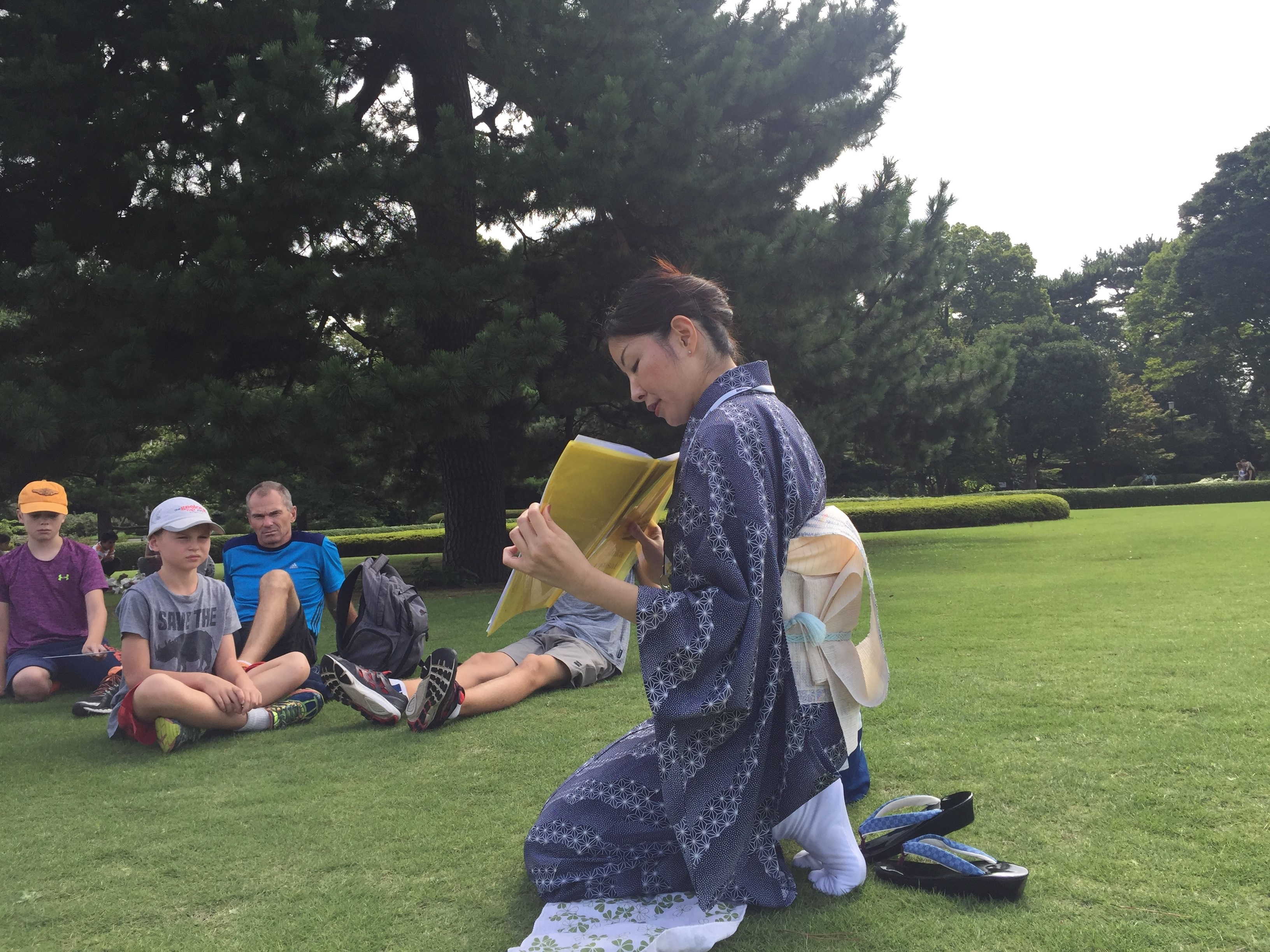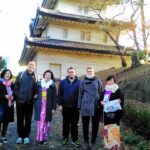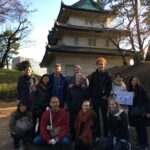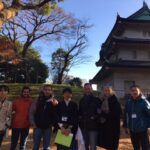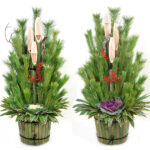Thank you for all the guests kindly joining our regular tour on December 24. We had 23 guests from various countries, and 9 volunteer guides and 7 volunteer guide trainees attended the tour. It was Christmas Eve. So we had fewer guests than usual. We divided into 4 groups and enjoyed the tour. It was warm even in December but sometimes cold winds blew.
Fujimi-Mamon, literally a wide house, was used as a weapon warehouse in the Edo period. It was recently opened to the visitors. We entered this house by way of trial. It is located on the border of the Imperial Palace East Gardens and the Imperial Palace residence area. Through the windows we can look at residence area including the silkworm house for producing silk fabrics and the Imperial Household Agency.You have to take off your shoes at the entrance and taking pictures in the house is not allowed.
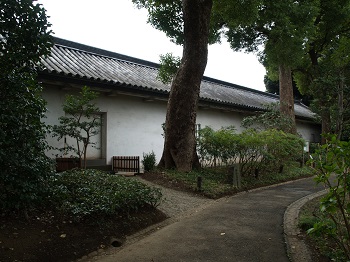
The New Year is coming and is the most important holiday in Japan. Most companies close their business from Dec. 30th through Jan. 3th or 4th. At the end of the year, many people return to their parent home, so traffic is very heavy. You should be careful of your schedule during the season. And people are very busy in cleaning their houses and preparing special foods for the New Year called “osechiryori”. Because of “osechiryori”, people (wives) are free from preparing foods during the New Year. Entrances of houses and buildings are decorated with a set of pine branches and bamboo called “Kadomatsu” literally pine gate. In Japan, at new year, a deity of a house is believed to come into the house through the pine gate. This is the reason that people clean the house at the end of the year and place the pine gate. During new year days people pay for a first visit to a shrine or temple to pray for good health, happiness, and prosperity for the new year. Meiji shrine is famous for its many new year visitors.

